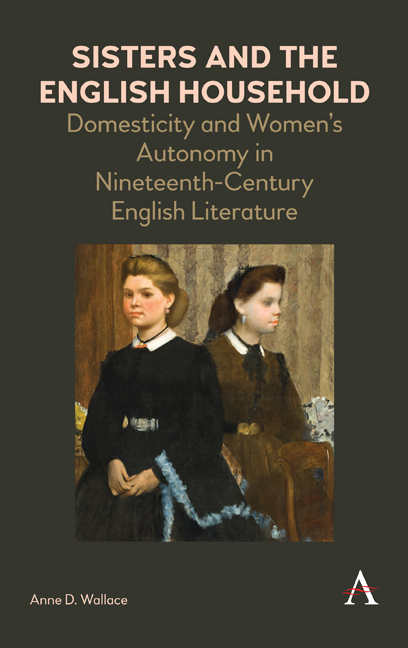 Sisters and the English Household
Sisters and the English Household Book contents
- Frontmatter
- Dedication
- Contents
- Acknowledgments
- Introduction
- 1 Alternative Domesticities: Revaluing the Sibling in the House
- 2 “Out into the Orchard”: The Departure of the Sibling in the House
- 3 The Problem of the Sister in the House
- 4 George Eliot's Natural History of the English Family
- Notes
- Works Cited
- Index
- Frontmatter
- Dedication
- Contents
- Acknowledgments
- Introduction
- 1 Alternative Domesticities: Revaluing the Sibling in the House
- 2 “Out into the Orchard”: The Departure of the Sibling in the House
- 3 The Problem of the Sister in the House
- 4 George Eliot's Natural History of the English Family
- Notes
- Works Cited
- Index
Summary
In the last decade or so, literary scholars have increasingly explored the significant historical distance between the ways we currently name, plot, and characterize sibling relations, and the quite different ways that pre- twentiethcentury writers and readers might have done so. Yet, as Mary Jean Corbett and Naomi Tadmor have separately argued, efforts to historicize our understanding of English families over the crucial transitional period of the eighteenth and nineteenth centuries have been weakened by scholars’ reliance on terms and ideas that assume stable, universally human familial structures and relations. When we focus on the sibling relation, this reliance proves particularly limiting: even Corbett and Tadmor, who are consciously working against such assumptions, demonstrate continuing tendencies to define “brother” and “sister” in terms of sexual, specifically conjugal, relations that reinscribe these stabilizing, universalizing terms, or to subsume the sibling relation into other categories, eliding its potential primacy in “family.”
Sisters and the English Household works to escape these lingering critical limitations through two innovations: a reframing of efforts to historicize “family” as a further historicizing of “domesticity” that renders it multiple and fluid, rather than monolithic; and a turn toward the unmarried adult sister as a figure of legal and economic autonomy representing productive labor in the domestic space. I argue for the recognition of at least two distinct ideals of domesticity, both functional throughout the nineteenth century, one of which understood sibling fortunes as fruitfully intertwined through the full extent of the siblings’ lives (corporate domesticity), and one of which expected the domestic, material, and to some extent emotional separation of adult siblings from their birth homes and from each other (industrial domesticity). The second configuration, though long counterbalanced by persistent idealizations of the first, siblinganchored model, was gradually and unevenly ascendant through the period. As households came to be primarily defined by the relations between spouses, and between parents and children, the mutual householding and devotion of siblings, once generally expected features of family life, began to seem extraordinary. More specifically, as a domestic space defined by the apparent exclusion of productive labor was increasingly idealized, the adult unmarried sister in the house became an object of intense cultural scrutiny, her troubling autonomy rendering her the crucial figure in the English nineteenth century's protracted cultural negotiation of familial, household, and domestic ideals.
- Type
- Chapter
- Information
- Sisters and the English HouseholdDomesticity and Women's Autonomy in Nineteenth-Century English Literature, pp. 1 - 18Publisher: Anthem PressPrint publication year: 2018


